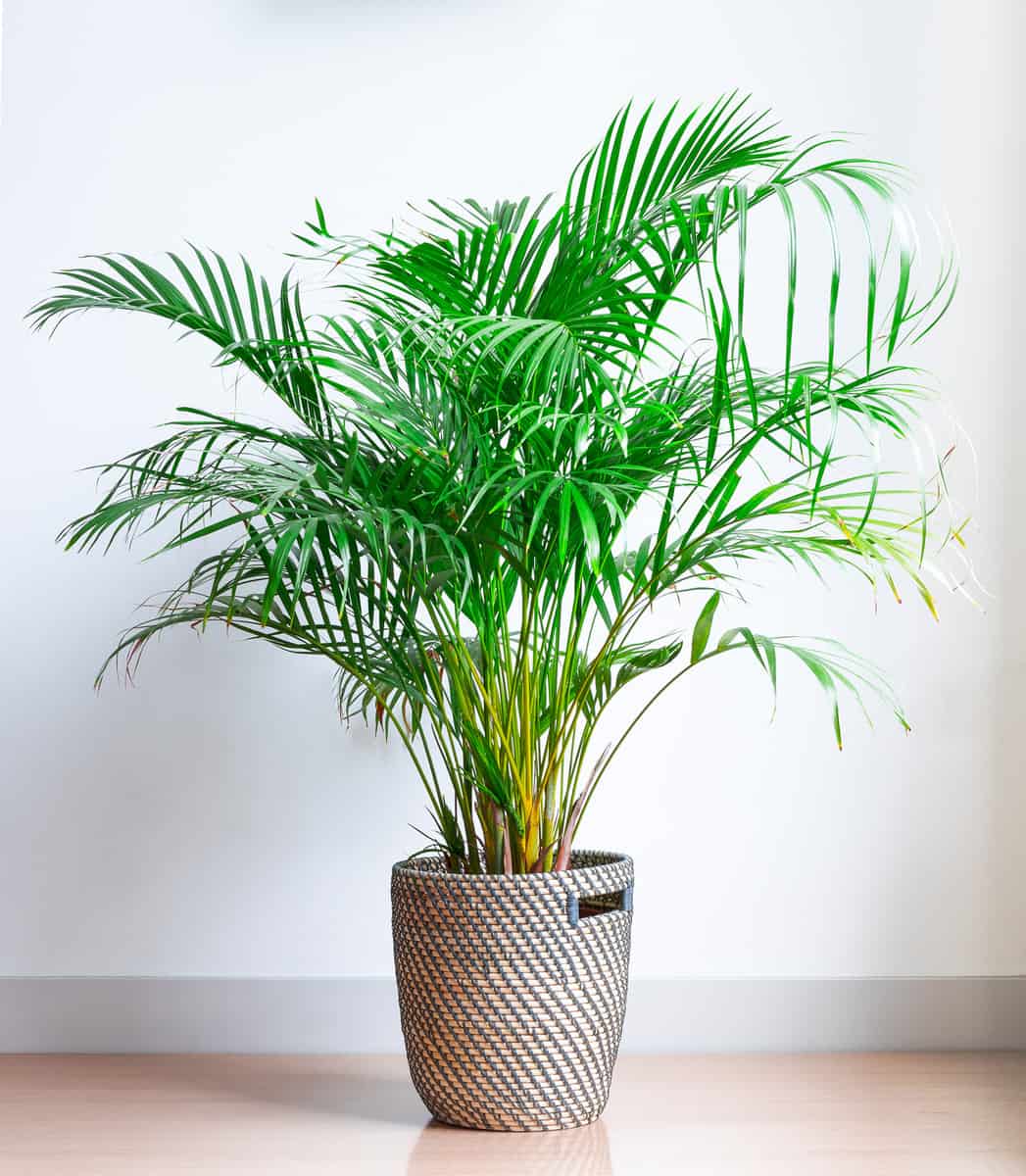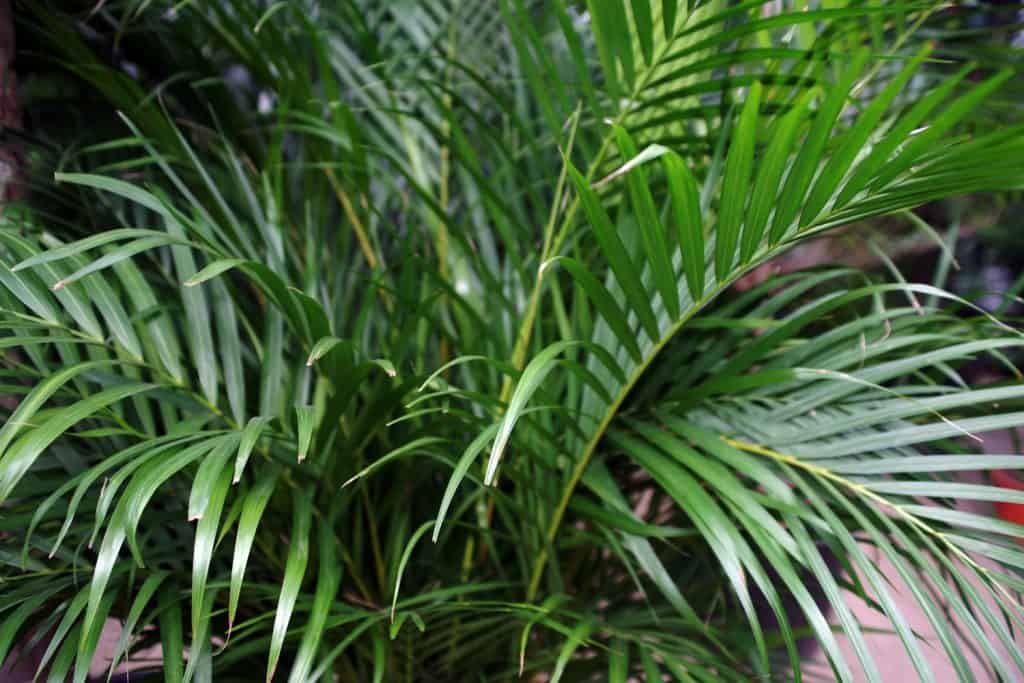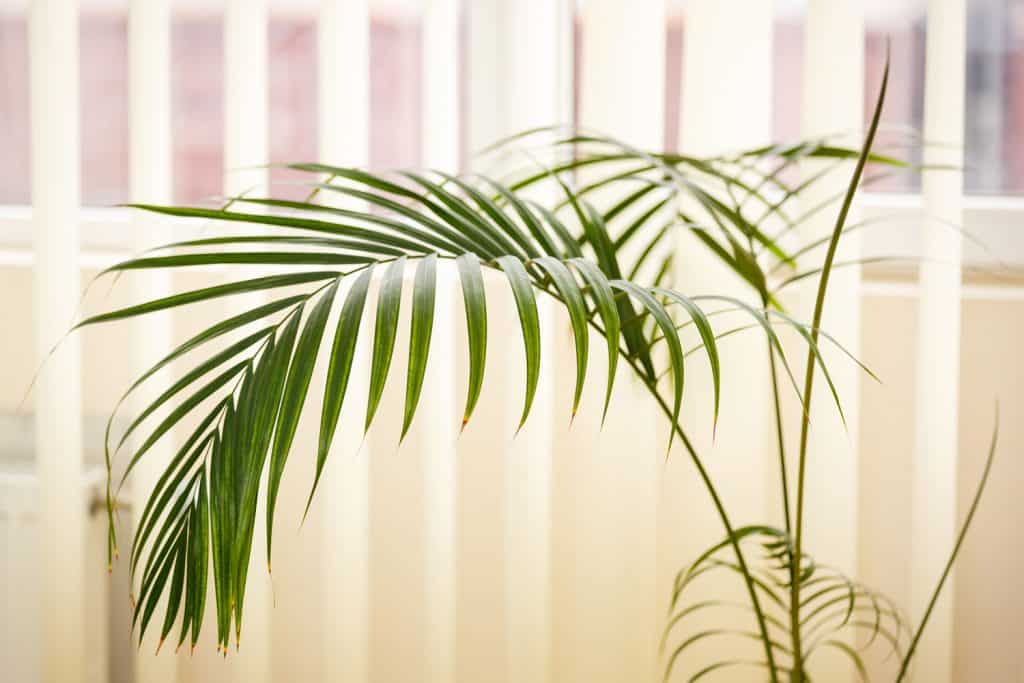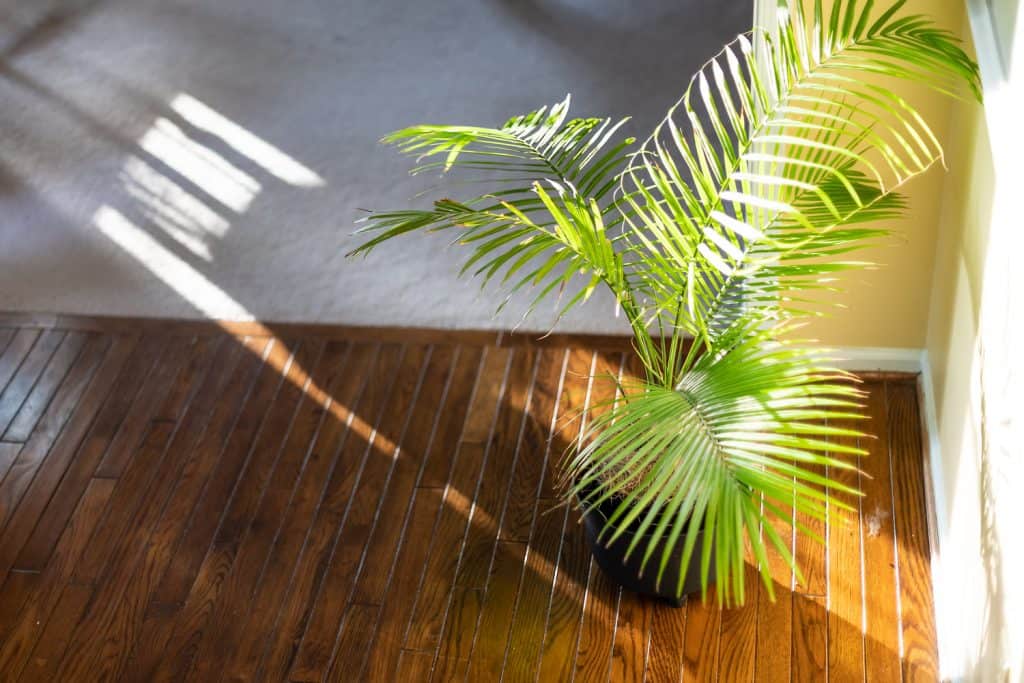Areca palm trees are known for their beauty, and they're wonderfully resilient. However, this doesn't mean that they aren't susceptible to common plant diseases and other issues. If you notice that your areca tree has brown, black, or white spots on the leaves, chances are that this is a sign that the plant needs tending to. We've researched the causes and treatments for these types of spots, and in this post, we will share them with you.
There can be several reasons why your areca palm tree has black, brown, or white spots on its leaves or branches. The area can be suffering from pest infestation, nutritional deficiencies, or fungal issues brought on by environmental problems. The best way to treat the plant is first to determine the cause of the issue. Next, you'll need to either treat the plant if it has fungal or nutritional issues or move the palm to an environment that promotes growth.
The faster you address the spots on your areca palm, the better chance the palm has quickly recovering from the issue. Remember that it may sometimes take several weeks to recover from certain fungal issues, so patience is key during this time. Continue reading to learn more about how to recognize and treat spot issues on your areca palm.
![Beautiful indoor areca palm plants on floor in room, Spots On Areca Palm - What To Do? [White, Brown And Black Spots]](https://gardentabs.com/wp-content/uploads/2021/05/Spots-On-Areca-Palm-What-To-Do-White-Brown-And-Black-Spots1.png)
What causes black spots on palms?
Scale Bugs
Scales are small bugs that love to crawl and bite at the leaves of indoor and outdoor plants. The bugs travel in groups, and when they are attached to the leaves of the plant, they began to suck at the sap, causing holes and black spots on the tree. Scale leave behind what appears to be a sooty mold or black bumps on the leaves and branches. Though these black spots may seem harmless at first, they can cause severe damage to your areca palm tree if the infestation is not treated promptly.
Fungal Diseases
Fungal issues are the most common cause of black spots on a rack of palm trees. Though several fungal issues can cause these spots, one common fungal problem is eukaryotic organisms. These fungi may appear on your plant if there is too much humidity in your home. Though areca palms love humidity, it is possible that too much can cause them to develop fungal problems.
Potassium Deficiency
A potassium deficiency can also cause your areca palm tree to develop black spots. Areca palm trees require potassium and other minerals to grow and activate molecular processes within the plants, usually after and during photosynthesis. If they lack potassium, the leaves will develop black and brown spots.
How do you treat black spots on palms?

Before treating the black spot on your palm tree, it's important to ensure that you're tackling the right issue. Let's look at how to treat the most common ones.
Treating Scale Bugs
To treat scale bugs, you can start by manually picking them off of the leaves. To do this, be sure to wear rubber gloves beforehand. Also, make sure that you place the bugs in a plastic bag, so they don't make their way into your home or re-infest the plant. You can also apply rubbing alcohol to the leaves of the plant to eradicate the bugs quickly. Neem oil is also a good choice to get rid of scale bugs.
Learn more about neem oil on Amazon.
Treating Fungus
If the fungal issue results from an environment that is too humid, the first step is to reduce the humidity in your home to no less than 40%. This will prevent the tree from being exposed to too much humidity while also preventing it from drying out. If the fungal issue is the result of pests, the quickest way to get rid of it is to apply neem oil or rubbing alcohol directly to the plant's leaves.
If the fungus or pest infestation is also in the plant soil, you'll need to re-pot the plant with the new soil and remove any infected soil away from the plant's root ball. You can also spray the plant with a chemical or all-natural fungicide.
Take a look at this fungicide on Amazon.
Treating Potassium Deficiency

Oftentimes a potassium deficiency in areca palms can be due to a lack of humidity or general dehydration in the palm. If the humidity in your home is less than 40%, this could be the issue for the deficiency. To treat this issue, it's best to first water the plant and mist the leaves a few times a week to keep them from drying out--that is if it shows other signs of dehydration. You'll also want to apply a balanced fertilizer to the plant at least once a week until the issue clears up.
Check out this fertilizer on Amazon.
Why does my areca palm have brown spots?
Overwatering
If the leaves of your areca palm have brown spots, more likely than not, the issue is from overwatering the plant. It can also be caused by fluoride in the water that you use to hydrate the plant.
Fungal Issues
Fungal issues can also cause brown spots to appear on the leaves of the areca palm. This can be the result of graphiola, anthracnose, or fall smut, all of which will cover both sides of the leaves, making them appear discolored and disfigured. More often than not, these fungal issues result from the plant being exposed to too much humidity or if the plants are placed too close together.
Nutritional Deficiencies
A nutritional deficiency can also cause brown spots to appear on the areca palm. This is usually a result of a lack of potassium, and if not treated early, it can worsen and cause the plant to die eventually. You may notice that the plant's leaves will start to turn yellow and droop or that new fronds have stopped growing at the bottom of the plant.
How do you treat brown spots on palms?

Overwatering
If the palm tree is overwatered and has developed a fungus, it's best to refrain from watering the tree until the soil is almost dry. However, if the soil is infected, it will need to be replaced. You may also want to lower the humidity and your home to around 40% in humidity for the next few weeks.
Treating Fungal Issues
If the palm is suffering from fungal issues due to too much moisture, the best thing to do is reduce the moisture in the plant's environment. Depending on the severity of the fungal issue, you may also need to replace the plant's soil with new uninfected soil and apply a fungicide. It's also best to monitor the plant for the next two to four weeks to recover. If the fungal issue results from pests, you'll need to eradicate the pest using an all-natural or chemical insecticide.
Learn more about this insecticide on Amazon.
Treating Potassium Deficiencies
A potassium deficiency is best treated by applying a quality fertilizer to the plant at least once a week. It's best to follow the instructions on the fertilizer to determine how much and how often to apply it, as many will need to be diluted.

What are the white dots on my plant?
White dots on indoor or outdoor plants are usually the result of fungal diseases or the residue from mealybugs.
Powdery Mildew
The powdery mildew is usually the result of plants that have been overwatered or are too crowded together. A high humidity environment can also cause it.
Mealybugs
Mealybugs can also cause a white powder-like substance to appear on your leaves. It may appear to look like cottony wax on the surface of the leaves, and eventually, it can affect the entire plant.
How do you treat white spots on leaves?
![Beautiful indoor areca palm plants on floor in room, Spots On Areca Palm - What To Do? [White, Brown And Black Spots]](https://gardentabs.com/wp-content/uploads/2021/05/Beautiful-indoor-palm-plants-on-floor-in-room-1.jpg)
Treating Powdery Mildew
The easiest way to treat powdery mildew is to cut off the infected leaves of the plant. You can also spray them with a chemical insecticide or use a baking soda solution consisting of one tablespoon of baking soda and a gallon of water. You can also spray the leaves once a week to help keep this issue at bay.
Check out this baking soda on Amazon.
Treating Mealybugs
A great way to get rid of mealybugs is to either apply rubbing alcohol or neem oil to the plant. You may need to apply this multiple times for the next few weeks, depending on how bad the infestation is.
Wrapping Things Up
![Beautiful indoor areca palm plants on floor in room, Spots On Areca Palm - What To Do? [White, Brown And Black Spots]](https://gardentabs.com/wp-content/uploads/2021/05/Exotic-tropical-areca-palm-leaves-copy-space.-Green-leaves-of-palm-plant-at-home.jpg)
We hope that this post has helped answer your questions about why spots may appear on areca palm trees. Remember, it's always best to address plant diseases and issues early, as this can help to nip them in the bud before they cause severe damage to the plant.
Before you go, be sure to check out our other posts:





